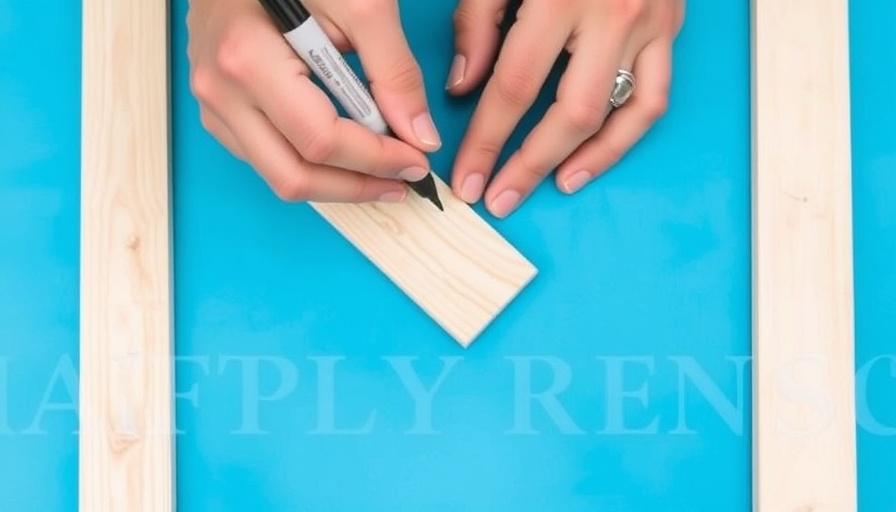
Mastering the Art of 45-Degree Joint Techniques in Carpentry
Woodworking, a cherished skill passed down through generations, continues to evolve as artisans explore innovative methods for crafting joints. Among the various strategies, joining wood at 45-degree angles holds a special place due to its elegance and functionality. This technique is particularly prominent in creating miter joints, which are frequently used in frames and detailed cabinetry to achieve a seamless look. Here, we delve deeper into the significance and the bespoke methods applied in achieving perfect miter joints, examining how traditional carpentry is adapting to modern standards.
In 'Unique Carpenter Techniques for Joining Wood at 45-Degree Angles,' the video highlights innovative strategies in woodworking that inspired us to explore these techniques further.
The Craft Behind Precision: Understanding Miter Joints
A miter joint occurs when two pieces of wood are cut at an angle, typically 45 degrees, and brought together to form a corner. This type of joint not only enhances aesthetics but also provides structural integrity when executed properly. A well-constructed miter joint can transform the character of a piece, allowing for smooth edges and a professional finish. However, achieving the perfect cut demands precision—a challenge that many novice woodworkers may face. Familiarizing oneself with tools such as the miter saw will be pivotal in realizing these critical cuts.
Tools and Techniques for Accurate Joints
The foundation of any successful woodworking project lies in the tools employed. A reliable miter saw is essential for cutting both angles and lengths efficiently. However, it isn’t the only implement needed for success. Other tools that may enhance joint precision include clamps, measuring tapes, and wood glue. The latter plays a significant role in fortifying the bond between the pieces and must be applied judiciously. Ensuring that pieces are tightly clamped can lead to stronger joints, minimizing gaps that detract from the joint's aesthetic and structural benefits. While the basic technique might seem straightforward, the skill lies in the execution, which with practice, leads to refined craftsmanship.
Unique Techniques: Thinking Outside the Box
Beyond the conventional angle cutting, some carpenters employ unique methods to elevate their miter joinery. Techniques such as the use of splines or biscuit joints enhance strength and consistency. Spline joints involve inserting a thin strip of wood as a connector, hidden within the joint—effectively boosting durability without compromising design. Meanwhile, biscuit joinery utilizes oval-shaped pieces of wood, offering similar benefits while streamlining alignment during assembly. This knowledge exemplifies how modern carpentry embraces innovation, facilitating smarter solutions that yield superior outcomes.
Practical Applications and Further Learning
Understanding these wood joining techniques is invaluable, especially for DIY enthusiasts looking to enhance their skill set. Mastering these processes can significantly enrich home décor through customized furniture, frames, and cabinetry. As individuals become more adept at carpentry, they unlock the potential to personalize living spaces while also reaping the rewards of self-made craftsmanship. For a more immersive experience, woodworking classes and online tutorials abound—providing practical guidance on varied techniques, including those tailing back to traditional practices. Utilizing resources such as video demonstrations can also sharpen one's skills and inspire creative expression.
Final Thoughts on 45-Degree Carpentry Techniques
Among the distinguished methods in the realm of carpentry, mastering the 45-degree angle joint can profoundly enhance home improvement projects. As carpenters continue to innovate and adapt to new technologies and methodologies, woodworking remains a sophisticated blend of art and science—requiring both creativity and precision. By fully engaging with the tools and techniques that define a miter joint's success, woodworkers can not only ensure the structural integrity of their creations but can also achieve a level of sophistication that enhances both function and design in any space.
 Add Row
Add Row  Add
Add 




Write A Comment